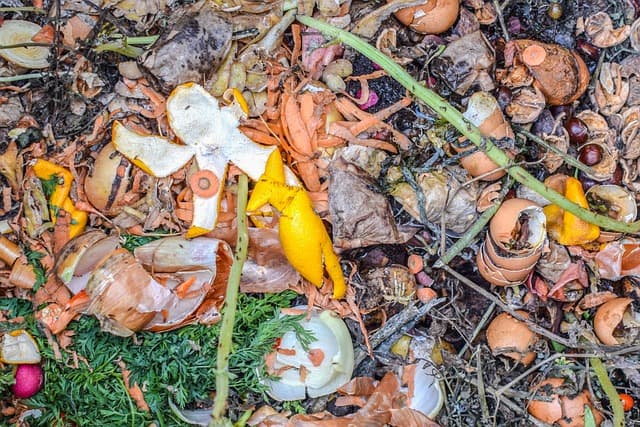Bokashi composting is an anaerobic fermentation process that uses a specific type of inoculant, or microorganisms, to break down food scraps, including meat, dairy, and cooked food. The word “bokashi” comes from the Japanese word for “fermented organic matter.”
Unlike traditional composting, which relies on aerobic bacteria to break down organic materials, Bokashi composting uses anaerobic bacteria, which do not require oxygen to survive. This allows for the breakdown of a wider range of food scraps, including those that would not typically be suitable for traditional composting, making it one of the main benefits of this option.
Let’s delve deeper into the Bokashi composting system.
Bokashi composting system explained
A Bokashi composting system typically includes a bin with a tight-fitting lid and a special inoculant, which is usually a mixture of effective microorganisms (EM) that can be purchased or made at home. The food scraps are layered with the inoculant and then the bin is sealed. The fermentation process creates a pickling effect and the food scraps are broken down by the microorganisms.
Once the bin is full, it is left to ferment for 2 weeks to a month. The fermented food scraps can then be added to an outdoor compost pile or buried in soil in your garden. Bokashi composting can also be used in conjunction with vermicomposting or traditional composting.
Bokashi composting has several benefits, including the ability to compost a wider range of food scraps including meat, dairy, and cooked food, the composting process is faster than traditional composting, and it generates less odors than traditional composting.
However, it is important to note that the fermented food scraps are not yet safe for human consumption and need to be further processed before adding to your garden.
What are the potential downsides of bokashi composting?
There are a few potential downsides to Bokashi composting to be aware of:
- Odor: Bokashi composting is anaerobic, which means that it relies on the decomposition of organic matter in the absence of oxygen. This process can produce some unpleasant odors if the bin is not managed properly. To avoid this, it’s important to make sure the bin is sealed tightly and that food scraps are well mixed with the inoculant to encourage fermentation.
- Cost: Bokashi composting requires the purchase of a Bokashi bin and inoculant, which can be more expensive than traditional composting methods.
- Space: Bokashi composting can take up more space than traditional composting methods, as the bin needs to be sealed tight and left to ferment.
- Not finished compost: Bokashi composting is a fermentation process and the final product is not yet finished compost, it needs to be further processed before adding to your garden. The fermented food scraps need to be buried in soil for about 2 weeks before adding to your garden.
- Limited Use: Bokashi composting can only be used for food scraps, you can’t add yard waste or other organic materials like traditional composting.
- Oxygen: Bokashi composting requires an absense of air so if oxygen gets into the bin through a leak or improperly fastened lid, it can slow the process down.
It’s important to weigh these downsides against the benefits of Bokashi composting, including the ability to compost a wider range of food scraps and the faster composting process. With proper management, Bokashi composting can be a valuable addition to your composting efforts.


